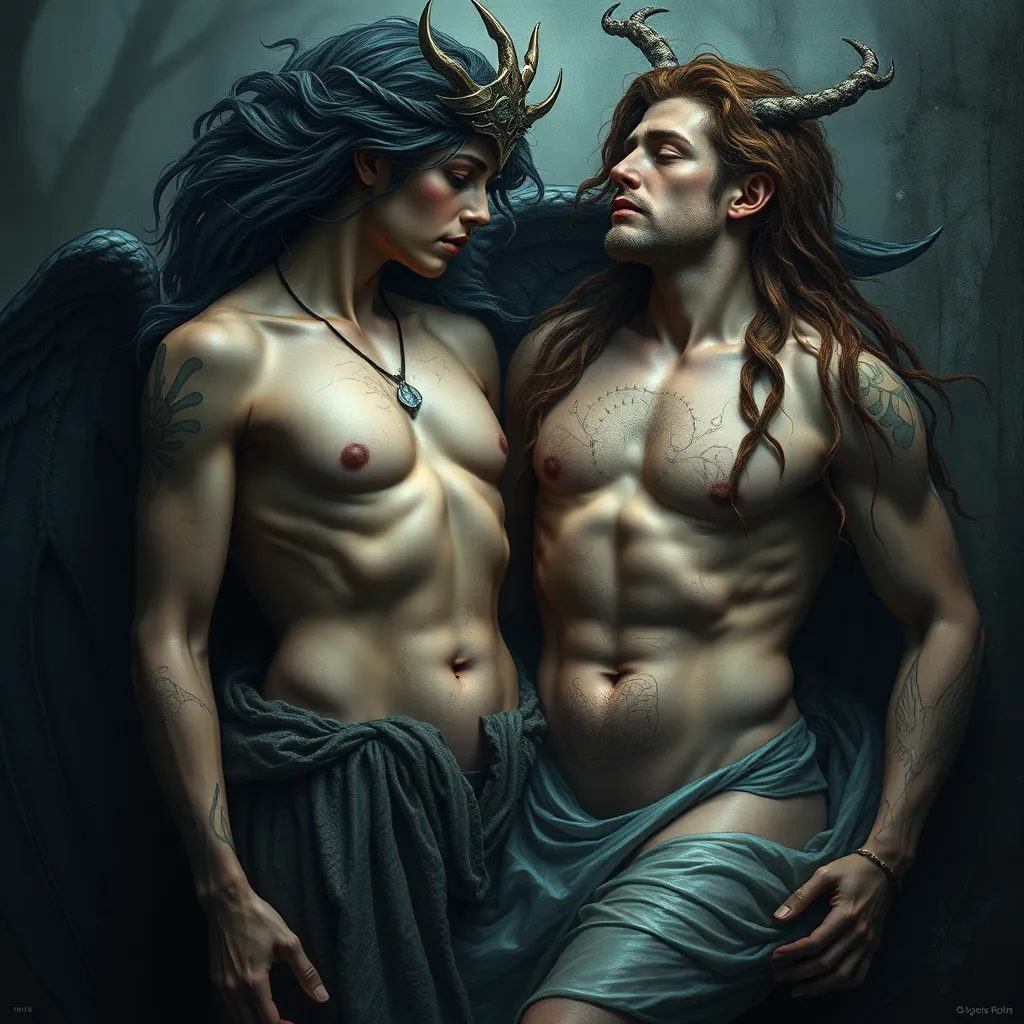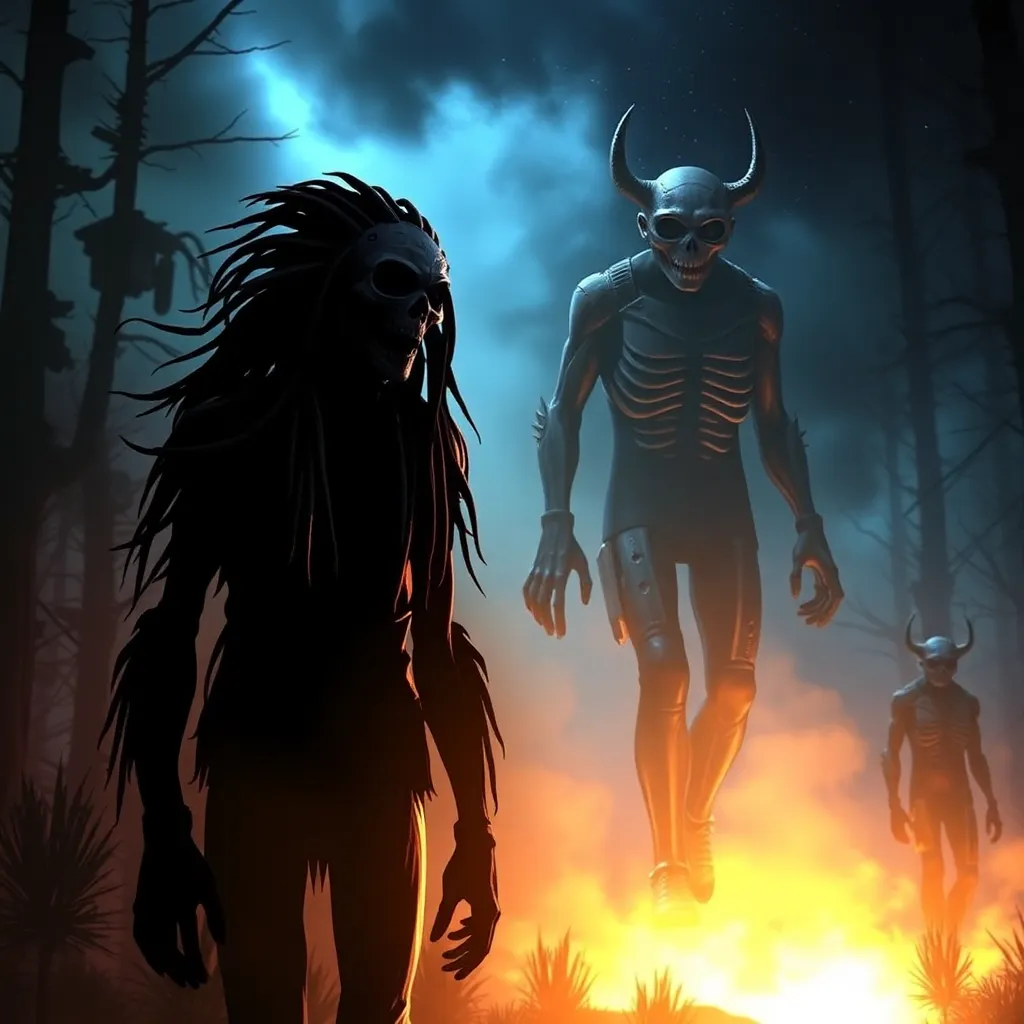Nymph and Man: Exploring the Relationships Between Nymphs and Mortals
I. Introduction
Nymphs have long captivated the human imagination, portrayed as enchanting and ethereal beings in various mythologies. Defined in mythology as minor female deities associated with nature, nymphs embody the essence of specific natural elements and are often depicted as beautiful maidens. Their relationships with mortals—humans—are rich and complex, filled with themes of love, desire, tragedy, and the cyclical nature of life.
This article aims to delve into the intricate relationships between nymphs and mortals, exploring historical contexts, the nature of their interactions, and their lasting impact on culture and literature. By examining these relationships, we can gain insight into humanity’s fascination with nature and the divine.
II. Historical Context of Nymphs in Mythology
A. Origins and Evolution of Nymph Lore
The origins of nymph lore can be traced back to ancient civilizations, particularly in Greek mythology, where they were often associated with specific natural features such as rivers, trees, and mountains. Over time, these beings evolved from localized spirits to more complex characters in mythological narratives.
B. Various Types of Nymphs: Naiads, Dryads, Oreads, etc.
Nymphs are categorized into several types, each associated with different elements of nature:
- Naiads: Water nymphs who inhabit rivers, streams, and springs.
- Dryads: Tree nymphs, particularly of oak trees, embodying the spirit of the forest.
- Oreads: Mountain nymphs, often depicted as guardians of the mountains.
- Oceanids: Sea nymphs, daughters of the Titan Oceanus, representing the vast ocean.
C. Cultural Significance Across Different Civilizations
Nymphs have held significant cultural importance across various civilizations. In ancient Greece, they were revered in art and literature, symbolizing the beauty of nature and the divine connection between humans and the natural world. Similarly, in Roman mythology, nymphs were celebrated as embodiments of fertility and the bounty of nature.
III. The Nature of Nymph-Mortal Relationships
A. Common Themes in Nymph-Mortal Interactions
The interactions between nymphs and mortals are often characterized by themes of enchantment, longing, and tragedy. Nymphs, with their beauty and allure, frequently captivate mortal hearts, leading to complex relationships that can be both rewarding and perilous.
B. Romantic Relationships: Love, Desire, and Tragedy
Many myths depict romantic entanglements between nymphs and mortals, showcasing a spectrum of emotions:
- Love: Deep connections that transcend the boundaries between mortals and the divine.
- Desire: The allure of the nymph often leads mortals to pursue them, sometimes against their better judgment.
- Tragedy: Many of these relationships end in sorrow, highlighting the consequences of unfulfilled love or the impossibility of bridging the gap between two worlds.
C. Friendships and Alliances: Mutual Benefits
Beyond romantic relationships, nymphs and mortals also form friendships and alliances. These interactions can provide mutual benefits, such as:
- Protection: Nymphs often help mortals navigate dangerous natural environments.
- Guidance: They may offer wisdom or knowledge about nature and its secrets.
- Support: In some tales, nymphs assist mortals in achieving their goals or overcoming obstacles.
IV. Nymphs as Symbols of Nature and Fertility
A. Representation of Natural Elements and Seasons
Nymphs are intrinsically linked to the natural world, representing various elements and seasons. For instance, dryads symbolize the vitality of forests, while naiads embody the purity of freshwater bodies. This connection reflects humanity’s reverence for nature’s beauty and complexity.
B. The Role of Nymphs in Symbolizing the Cycle of Life
Nymphs play a crucial role in symbolizing the cycle of life. They are often associated with birth, growth, and renewal, embodying the perpetual cycle of nature. Their presence in myths signals the interplay between life and death, reflecting the transient nature of existence.
C. Impact on Mortal Perceptions of Nature
The portrayal of nymphs has significantly influenced mortal perceptions of nature. They are seen as protectors of the natural world, fostering a sense of respect and wonder towards the environment. This reverence is evident in various cultural practices, where nature is celebrated and preserved.
V. Case Studies: Notable Nymph and Mortal Stories
A. The Tale of Echo and Narcissus
The tragic story of Echo and Narcissus illustrates the profound consequences of love and desire. Echo, a mountain nymph, falls in love with Narcissus, a handsome mortal. However, Narcissus is enamored with his own reflection, leading to Echo’s despair and eventual demise.
B. The Love Story of Leander and Hero
The tale of Leander and Hero highlights the theme of love transcending boundaries. Hero, a priestess of Aphrodite, and Leander, a mortal, fall deeply in love. Their romance is marked by tragedy, as Leander drowns while trying to swim to Hero, leaving her heartbroken.
C. The Legend of Pan and the Nymphs
In various myths, the god Pan is depicted pursuing nymphs, often leading to playful yet chaotic interactions. The nymphs, representing the untamed aspects of nature, challenge Pan’s advances, highlighting the tension between mortal desires and the independence of divine beings.
VI. Consequences of Nymph-Mortal Relationships
A. Transformation and Growth of Mortals
Relationships with nymphs often lead to significant transformations in mortals. These interactions can be catalysts for personal growth, pushing characters to confront their desires, fears, and ultimately their humanity.
B. The Price of Disregarding Nymphs’ Boundaries
Disregarding the boundaries set by nymphs can have dire consequences. Many myths warn of the repercussions of disrespecting these divine beings, often resulting in tragedy or punishment, reinforcing the notion of balance between mortals and nature.
C. Reflections on Mortality and Immortality
The relationships between nymphs and mortals often provoke reflections on themes of mortality and immortality. Nymphs, as eternal beings, hold a mirror to the fleeting nature of human life, prompting mortals to ponder their existence and legacy.
VII. Modern Interpretations and Adaptations
A. Nymphs in Contemporary Literature and Media
In modern literature and media, nymphs continue to be powerful symbols. They appear in fantasy novels, films, and television series, often reimagined with contemporary themes while retaining their ethereal charm.
B. The Evolution of Nymphs in Popular Culture
Nymphs have evolved in popular culture, adapting to new narratives that reflect societal changes. They are often portrayed as strong, independent characters, challenging traditional depictions of submissiveness and fragility.
C. Relevance of Nymph-Mortal Themes Today
The themes of nymph-mortal relationships remain relevant today, as they explore fundamental human experiences such as love, loss, and the connection to nature. These narratives encourage modern audiences to reflect on their own relationships with the environment and the divine.
VIII. Conclusion
A. Summary of Key Points
This exploration of nymph and mortal relationships reveals the complexity and richness of these interactions across mythology. From historical contexts to modern interpretations, nymphs continue to symbolize nature’s beauty and the intricacies of human emotion.
B. The Enduring Fascination with Nymphs and Mortals
The enduring fascination with nymphs and mortals speaks to humanity’s desire to connect with nature and the divine. These stories resonate deeply, reflecting our hopes, dreams, and fears.
C. Final Thoughts on Their Relationship and Its Implications
Ultimately, the relationship between n




